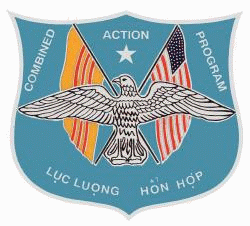
Prov Rep By Dr. Jan H. Vanderbie
Vietnam
Published by: Dorrance & Co. Publishers
 |
Prov Rep By Dr. Jan H. Vanderbie |
Page 162
As I see it, the most difficult question facing us is how to put a spark, and discipline, and confidence into the various ARVN units which don't have these characteristics.It can be done. The VC seems to know how to do it. The CIA people managed to build a terrific team out of the PRUs. The various CAC (or CAP) teams were doing real well.
In all these cases of high performance, we find the common denominator of a good example and insistence on good discipline.
Since I strongly believed in the CAC team idea - believing that a synergistic effect can take place when local soldiers get mixed with US troops - I proposed to the Commanding General of the US Marines in Quang Tri to place as many CAC teams as he could establish in the RD area, co-located with each RD team.
The general was quite interested, but the province chief was not. By the time I left Quang Tri, none of these units had been placed in the RD Area.
Pages 89-90
The failure to establish security has been primarily a military failure. Yet is is not the military who must be made the villains. It is just that out of ignorance, we put the wrong machine in Vietnam and then closed our eyes.The US Military are not incompetent. By and large they know their business, which is modern warfare. The trouble starts when we ask our military to switch roles. This they are not prepared to do. Like well-trained professionals they like to stay on the familiar trail. Thus they kept on training the ARVN to be an image of the US Army, and they prepared for conventional warfare even while guerillas were knocking at the lecture halls. Likewise, they kept giving the major part of their attention to the ARVN, the regular army, while about half the armed forces of Vietnam consist of Popular and Regional "local" forces. Ironically, the poorly-equipped, poorly advised Popular Forces carried the brunt of the enemy offensives, and often they performed as well, if not better than, the regular forces.
The Marines in I Corps had tried to capitalize on the willingness of the Popular Forces to defend their own villages by initiating the Combined Action Platoons experiment. The experiment was successful, but the idea was not adopted in the other corps areas. Instead, the US Army kept stubbornly clinging to their search-and-destroy tactics long after it had become perfectly evident that these methods were counterproductive. That the CAP idea was not adopted could partly be blamed on the NIH syndrome (Not Invented Here). How could the Army consider a Marine Corps idea? There were other examples, however, which pointed to a more basic problem. The Army's own Special Forces had occasionally shown signs of originality and adaptability. When this became known, they were downgraded.
Return to: Historical Data
Return To: